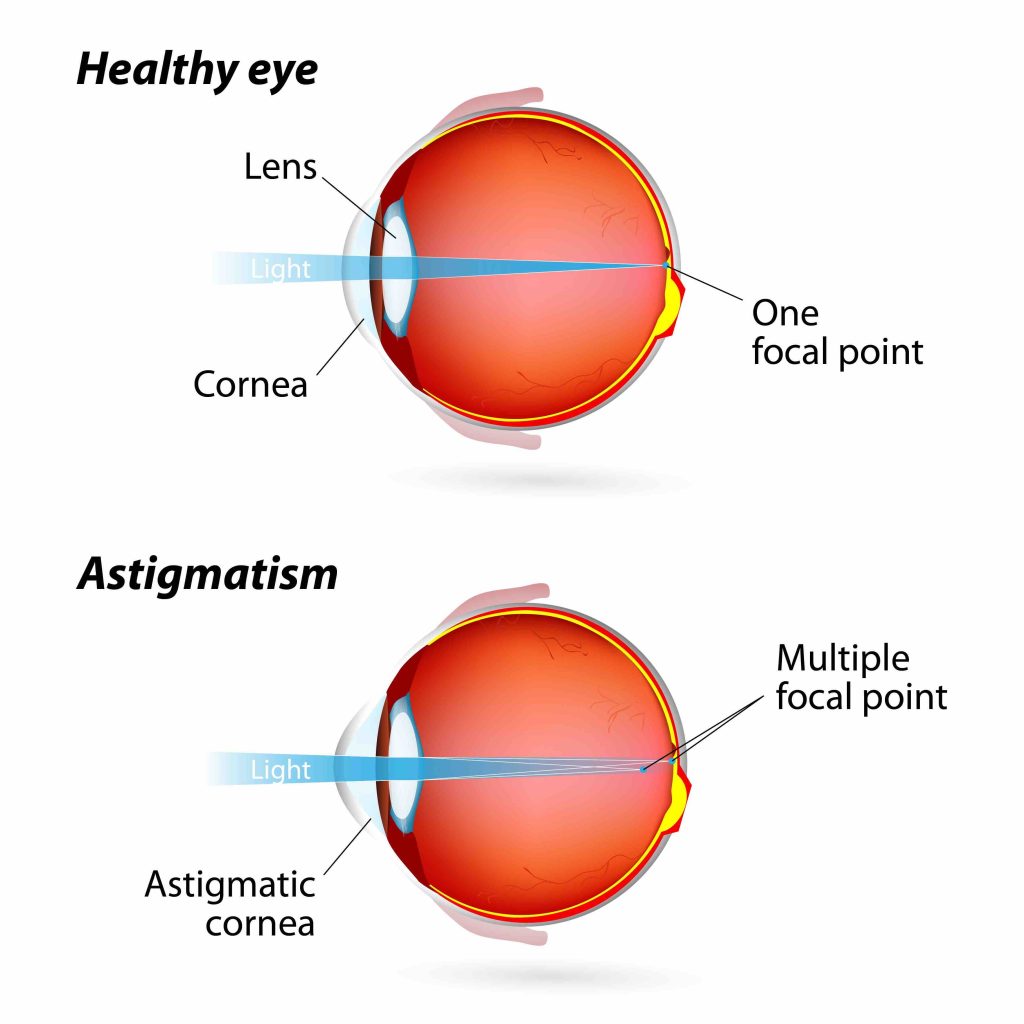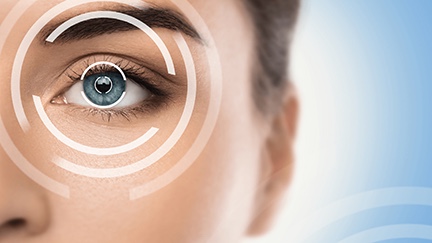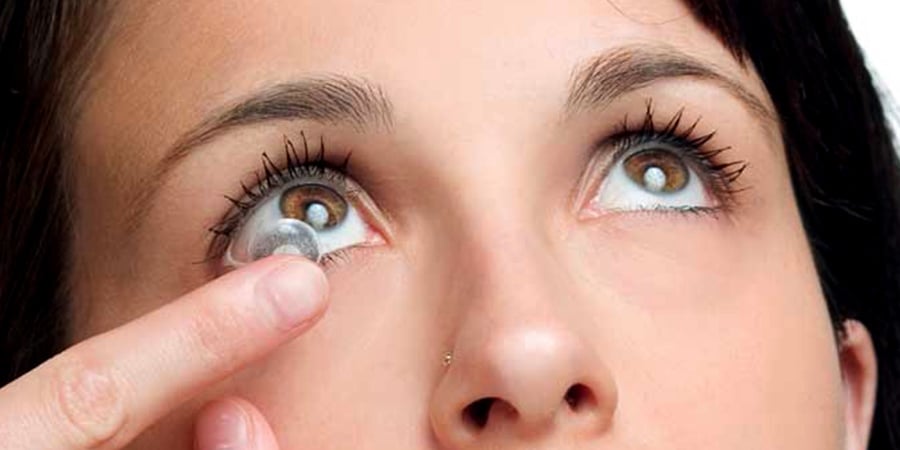What is Astigmatism?
People with astigmatism have corneas that are less spherical like a basketball and more oval like a football. The result of an astigmatic cornea is that images are blurred at all distances, both far and near. Astigmatism can be corrected by glasses, contact lenses, and also with LASIK.
People with astigmatism are more likely to have other refractive errors like nearsightedness and farsightedness. This makes vision correction more difficult, depending on the severity of their refractive errors.
LASIK is able to treat astigmatism and other refractive errors by permanently reshaping the cornea. This is done by removing a small amount of tissue from the cornea, correcting any refractive errors and allowing our patients to see the world around them clearly.

The History of Astigmatism Correction
When LASIK was first FDA approved, astigmatism correction was not yet possible. At the time, LASIK experts were only able to correct nearsightedness. Astigmatism is more complex to correct because astigmatism exists at an axis or a direction.
When we test vision, patients are sitting up. When a patient moves from a seated position to lying down, the eye can rotate a few degrees and it is possible that the axis of astigmatism may no longer line up perfectly. With the creation of iris registration, that problem was solved in a sophisticated and amazing way. Today a detailed map of each patient’s visual system is obtained. Each person’s visual fingerprint is unique just like your fingerprint on your hand. At the time of the Custom Vision Map, iris registration is also recorded. By using the unique iris landmarks of each patient, the vision correction treatment is lined up perfectly regardless of the patient position.
Imagine each Custom Vision Map as your LASIK surgeon’s individual map of your eye. It is with this map that we are able to provide such optimal visual results with LASIK.
Even when a patient has one refractive error or astigmatism, using their Custom Vision Map gives your surgeon a road map of your eye’s irregularities.
This incredible advancement in technology has allowed our LASIK surgeons to help their patients achieve the visual results desired.

Dry Eyes After Refractive Surgery
Refractive surgical procedures like LASIK and PRK have become a highly sought-after means of vision correction. These procedures involve…

So I Was Told I am Not a LASIK Candidate
If you have been imagining a life with less dependence on contact lenses or glasses, it can be disappointing…

Contact Lens Intolerance and How To Relieve It
Many of our patients who have refractive errors enjoy wearing contact lenses instead of glasses for a variety of…